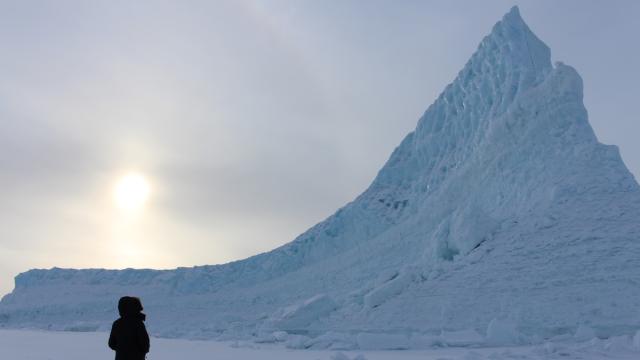A team of scientists is warning that the double whammy of a naturally recurring weather pattern and rising temperatures is triggering dramatic melting on the Greenland ice sheet — a problem the researchers liken to recent global coral bleaching events, which have been fuelled by the one-two punch of El Niño and climate change.
The research, published Monday in the Proceedings of the National Academies of Sciences, examined the giant northern ice sheet’s slim-down from 2003 to 2016 using data collected by NASA’s Gravity Recovery and Climate Experiment (GRACE) satellite and by a network of GPS stations.
Over the course of a decade, the scientists documented a four-fold acceleration in the mass of ice lost across Greenland, from 102 billion tons a year in 2003 to 393 billion tons a year in 2013. Then, all of a sudden, something caused Greenland to press pause. The ice losses ground to a near-halt for 12-18 months, before accelerating again.
That something, the researchers say, was the North Atlantic Oscillation (NAO) — a natural atmospheric cycle that influences weather across a wide region as it oscillates between positive and negative. Positive phases of the NAO bring cooler-than-average temperatures to Greenland, while negative phases are associated with warmer summers and less snowfall, particularly in west Greenland.
From 2003 to 2013, the NAO veered more and more negative, a trend the researchers found mapped closely to a speed-up in the amount of meltwater flowing off southwest Greenland. Then the NAO went briefly and dramatically positive, coinciding with the ice loss pause, before dipping negative again.
This is important for a few reasons. For one, Greenland’s sensitivity to the NAO highlights just how vulnerable ice is to a slight uptick in air temperatures, a finding with clear implications at a time when the Arctic is incredibly quickly.
But moreover, the research shows how a naturally occurring cycle combined with human-caused warming are driving major ice losses today.
“These oscillations have been happening forever,” lead author Michael Bevis of The Ohio State University said in a statement. “So why only now are they causing this massive melt? It’s because the atmosphere is, at its baseline, warmer. The transient warming driven by the North Atlantic Oscillation was riding on top of more sustained, global warming.”
The researchers make the analogy to how the effects of El Niño — a natural climate oscillation where warmer-than-average waters in the equatorial Pacific influence weather around the world—have piled on top of global warming in the oceans, with disastrous consequences for the planet’s coral reefs. Global coral bleaching events in 1998, 2010, and 2016 all coincided with El Niño years, but as coral reef scientists have repeated ad nauseam, these events also bear fingerprints of climate change.
El Niño simply didn’t have the juice to cook reefs around the world absent the background rise of global temperatures. The same may now be true for negative NAO years and pulses of ice melt at Greenland’s surface.
This isn’t the first recent study to highlight the precarious position of our planet’s ice. A study published in Nature in December showed rates of melting at Greenland’s surface have surged in recent years and warned that a “nonlinear response” to rising summertime air temperatures will cause the melting to accelerate even more in the future.
If all of Greenland’s ice were to melt — a scenario which sounds extreme but which may have happened in the not-too-distant past—global sea levels would rise nearly 7.62m.
Mountain glaciers are also disappearing. In the western U.S. and Canada, these small-but-regionally-significant chunks of ice are melting four times faster than they were a decade ago, per a study out last week in Geophysical Research Letters. Then, at the bottom of the world, there’s the big kahuna — nearly 60.96m of global sea level rise locked away in the frigid wastelands of East Antarctica. A study published last week in Nature suggested that even this frozen fortress is starting to weaken.
We’ve still got time to prevent a nightmare melt scenario from unfolding, but the steady drumbeat of studies showing Earth’s icy landscapes in limbo reminds us that the clock is ticking.
